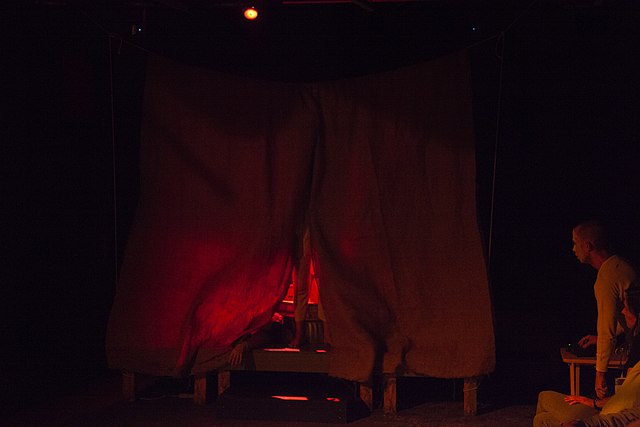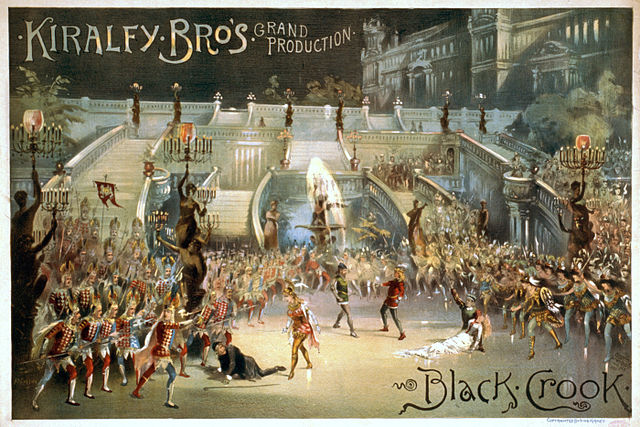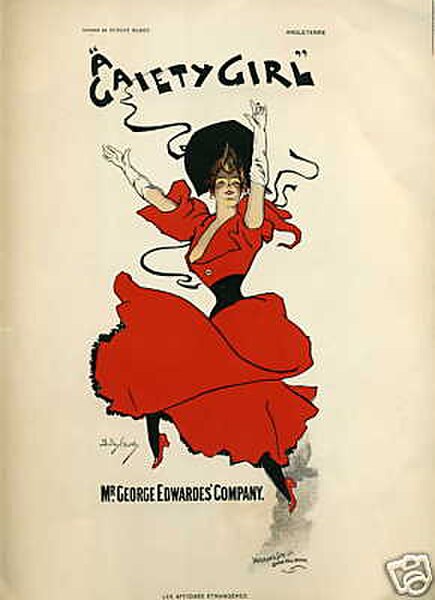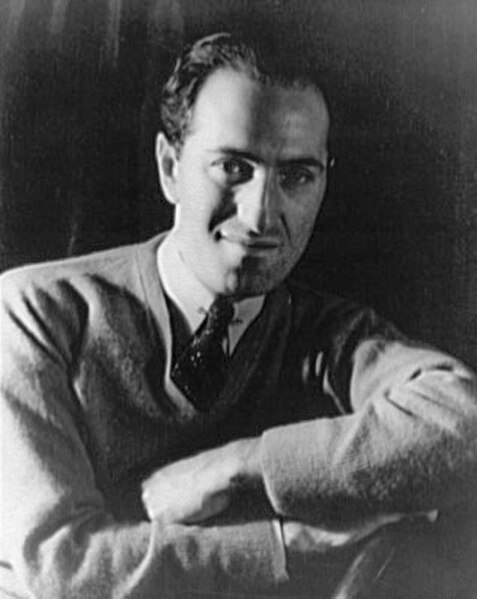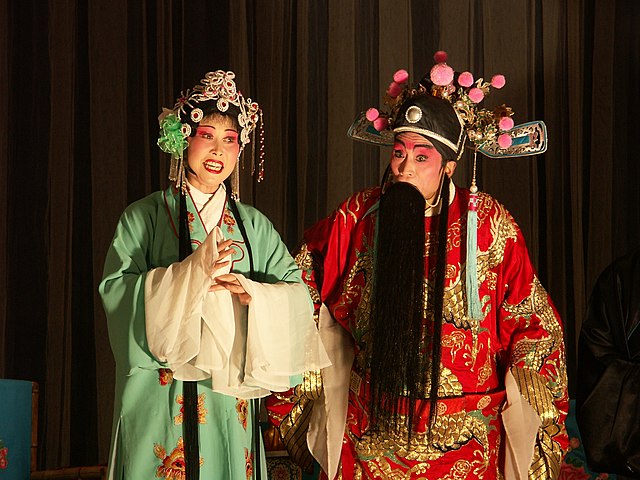Scenic design, also known as stage design or set design, is the creation of scenery for theatrical productions including plays and musicals. The term can also be applied to film and television productions, where it may be referred to as production design. Scenic designers create sets and scenery to support the overall artistic goals of the production. Scenic design is an aspect of scenography, which includes theatrical set design as well as light and sound.
Set design model by Marcel Jambon for an 1895 Paris production of Giuseppe Verdi's Otello.
Set design for the New Zealand Opera's 2016 production of Mozart's Magic Flute
Scenic design for The 2010 Family Series, by Glenn Davis
A simple red curtain set design for the Oresteia presented by Stairwell Theater, 2019
Musical theatre is a form of theatrical performance that combines songs, spoken dialogue, acting and dance. The story and emotional content of a musical – humor, pathos, love, anger – are communicated through words, music, movement and technical aspects of the entertainment as an integrated whole. Although musical theatre overlaps with other theatrical forms like opera and dance, it may be distinguished by the equal importance given to the music as compared with the dialogue, movement and other elements. Since the early 20th century, musical theatre stage works have generally been called, simply, musicals.
The Black Crook was a hit musical on Broadway in 1866.
A Gaiety Girl (1893) was one of the first hit musicals.
George Gershwin
Chinese opera performers




